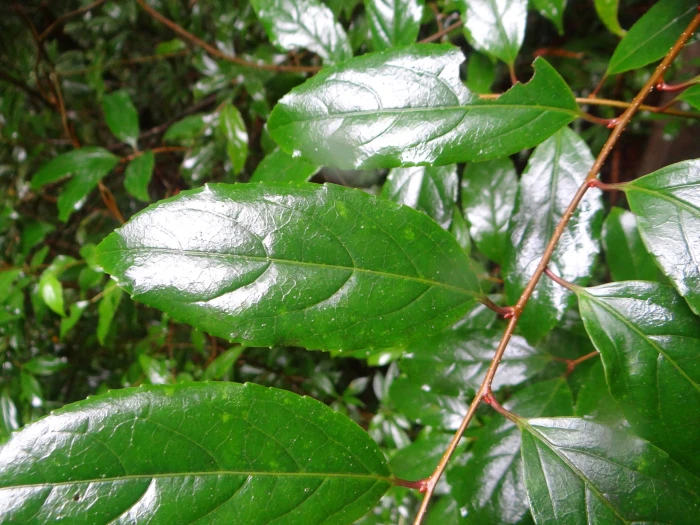Oriental Bittersweet
(Celastrus punctatus)
Oriental Bittersweet (Celastrus punctatus)
/
/

呂一起(Lu i-chi)
CC BY 4.0
Image By:
呂一起(Lu i-chi)
Recorded By:
Copyright:
CC BY 4.0
Copyright Notice:
Photo by: 呂一起(Lu i-chi) | License Type: CC BY 4.0 | License URL: http://creativecommons.org/licenses/by/4.0/ | Rights Holder: 呂一起(Lu i-chi) | Publisher: iNaturalist | Date Created: 2014-07-13T14:41:30-07:00 |

























Estimated Native Range
Climate Requirements for Richmond, Virginia
| This Plant | Your Site | Plant Suitability for Your Location | ||
|---|---|---|---|---|
| • Precipitation | 11" - 167" | 43" | Aquatic | Aquatic |
| • High Temp. | 57°F - 91°F | 90°F | Your summer temperatures are normal for this plant. | Excellent |
| • Low Temp. | -6°F - 61°F | 27°F | Your winter temperatures are normal for this plant | Excellent |
This plant should grow well at your location with about N inches per year (Y minutes per month) of irrigation.
Summary
Celastrus punctatus, commonly known as Oriental Bittersweet, is an evergreen vine native to temperate regions of East Asia, including China, Taiwan, and Japan. It is typically found in a variety of habitats such as forest edges, woodlands, and thickets. This vine can grow to a height of 10-15 feet (3-4.6 meters) and is known for its ability to climb with the aid of tendrils. The flowers of Celastrus punctatus are small, yellow, and rather inconspicuous, blooming in late spring to early summer. The plant is more noted for its attractive, spherical yellow fruits that split open to reveal red seeds, which persist into winter and provide visual interest.
Oriental Bittersweet is valued for its ornamental fruit, which is used in floral arrangements and wreath-making. It is adaptable to a range of cultivation conditions, tolerating both full sun and part shade. It prefers medium to fast-draining loam soils and requires medium amounts of water. While it can be a beautiful addition to gardens, it is important to note that in some regions, particularly in North America, it has become invasive, outcompeting native plants and disrupting local ecosystems. Gardeners should be cautious and consider local regulations and alternative non-invasive species for planting.CC BY-SA 4.0
Oriental Bittersweet is valued for its ornamental fruit, which is used in floral arrangements and wreath-making. It is adaptable to a range of cultivation conditions, tolerating both full sun and part shade. It prefers medium to fast-draining loam soils and requires medium amounts of water. While it can be a beautiful addition to gardens, it is important to note that in some regions, particularly in North America, it has become invasive, outcompeting native plants and disrupting local ecosystems. Gardeners should be cautious and consider local regulations and alternative non-invasive species for planting.CC BY-SA 4.0
Plant Description
- Plant Type: Shrubs, Vines
- Height: 10-15 feet
- Width: 4-6 feet
- Growth Rate: Rapid
- Flower Color: Yellow
- Flowering Season: Fall
- Leaf Retention: Evergreen
Growth Requirements
- Sun: Full Sun, Part Shade
- Water: Medium
- Drainage: Fast, Medium
Common Uses
Bird Garden, Butterfly Garden, Erosion Control
Natural Habitat
Temperate regions of East Asia, including forest edges, woodlands, and thickets
Other Names
Common Names:
Scientific Names: Celastrus punctatus , Celastrus articulatus subsp. punctatus , Celastrus articulatus var. punctatus , Celastrus articulatus var. punctatus , Celastrus articulatus var. punctatus , Celastrus articulatus var. punctatus , Celastrus elevativenius , Celastrus elevativenus , Celastrus geminiflorus , Celastrus gracillimus
GBIF Accepted Name: Celastrus punctatus